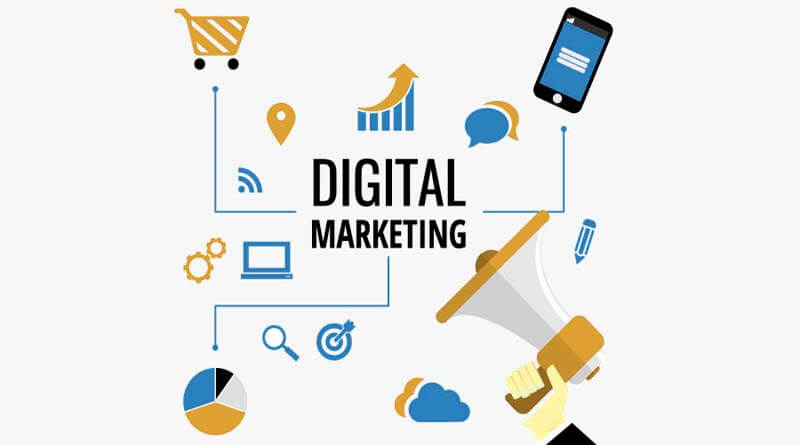History, as you know, develops in a spiral. So in the “fate” of digital marketing (digital marketing, hereinafter – DM), it seems, the next round has come.
The birth of Internet marketing, as an offshoot of digital marketing, dates back to the early 90s of the last century. It was then that the first companies began to post information on the services/products/goods provided on their websites. This was the first – innovative stage in the development of DM. The second stage – a massive one – was marked by the widespread use of Internet technologies in the economic sphere. The third – the strategic one began in 2000 – the leading position in digital promotion is occupied by advertising in social media (social networks, blogs, microblogs, forums, video hosting, etc.).
This stage of Internet marketing development is likely to develop into the fourth phase soon. Therefore, it is time to take care of preparing your business for the next round of the historical spiral. Many entrepreneurs note that lately old tactics and DM schemes for B2B business are no longer bringing the expected results, they need to be changed. Ideally, to maintain the relevant work of the business schemes, it is advisable to update them at least once every 1-2 years.
This mode will prevent possible breakdowns and slippage. The habitual channels of digital marketing (websites, email newsletters, digital advertisements, social media posts, and blog posts) often only increase website traffic, but not do enough to increase conversions.
To Achieve the Ultimate Goal Now you Need
- Using more integrated marketing. All elements of the marketing policy must interact clearly in the name of presenting the brand most consistently and constantly possible. Perhaps the combination of cold and warm calls will increase efficiency.
- A combination of marketing technologies. “You can’t keep all your eggs in one basket” – this law also applies to DM. No software tool can handle the entire digital marketing burden of your company/brand/product on its own. The entire marketing technology infrastructure must be intelligently designed and integrated. For example, an advertising campaign conducted only through social networks is certainly one of the most effective, but, alas, not self-sufficient. For maximum effect, use the maximum number of distribution channels. Review the entire system and the interaction mechanisms of its elements.
- The redistribution of functional responsibilities: the transfer of marketing actions to a new plane, the growing role of information technologies has led to the expansion of requirements for the participants in this process. The head of the marketing department must have information about all the possibilities of digital marketing in order not only to implement marketing schemes but also together with IT specialists to evaluate the effectiveness of advertising campaigns.
- Complete transition to an omnichannel sales strategy. This method involves deep analytics and data collection from all means of electronic communication. Omnichannel marketing covers absolutely all channels of communication about your brand. This is a generally accepted trend, even the multichannel method of advertising distribution that preceded it is gradually losing ground today. After all, if you leave at least one of the information channels out of your field of vision, your potential consumer may be there. At the same time, you cannot focus on only one of the channels – what if your target audience is not represented there at all.
- Emphasis on B2B Marketing Scheme: All of your digital marketing should be tailored to your target audience. Even if you are a B2B Managed Services (MSP) or Software (SaaS) provider, targeted marketing should be your top priority.
What are the most attractive information technology opportunities for consumers in everyday life? Based on case studies of products, goods, and services demanded by customers during the first two decades of widespread Internet use, scientists have concluded that inbound marketing campaigns are based on three behaviours that have led to the digitalization of marketing. So, three features of the web: accessibility, fun, personalization – attract both sellers and buyers to the Internet.
Availability
The modern consumer can no longer do without high-quality digital content. Therefore, any message arriving through these channels is the most trusted. Take, for example, the first SMS-ki, which radically changed our understanding of remote communication, providing the ability to exchange text messages anytime and anywhere. Now it is difficult to imagine life without access to the World Wide Web.
Fascination
By turning to digital content, consumers want to satisfy their needs, emotional and rational. This is what happened initially: from the first popular web portals to the ultra-modern virtual reality of the new generation. The famous statement of N. Rothschild “Who owns the information, he owns the world” has not lost its relevance for more than two centuries. It is the thirst for new information, the insatiable hunger for information that attracts more and more new visitors to the network, who may one day become your customers.
Personalization (individual settings)
Users tend to customize the process of interaction with the Internet space, selecting their more or less constant range of resources. The current generation is actively refusing to watch multiple TV channels, having access to digital content with innumerable web pages. We are spoiled by the possibilities of information technology, we like it, and we are not going to give it up. Moreover, modern digital content tries to anticipate user requests as much as possible, taking into account their individual experience.
Thus, regardless of the scheme of your business (B2B or B2C), establishing a clear interaction with a potential client plays a key role in building a digital marketing strategy. The third stage of DM development is coming to its logical conclusion, quantitative changes are about to develop into qualitative ones. In order not to be left on the sidelines of life, the modern entrepreneur needs to constantly be ahead of the curve. Taking into account the latest trends and laws of digital marketing development will allow you to keep your business at the forefront.

